Mohammad Bagher Menhaj
SFE: A Simple, Fast and Efficient Feature Selection Algorithm for High-Dimensional Data
Mar 17, 2023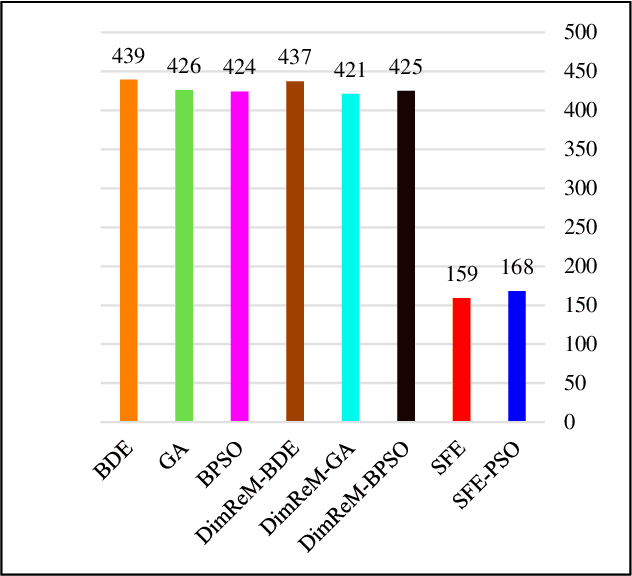
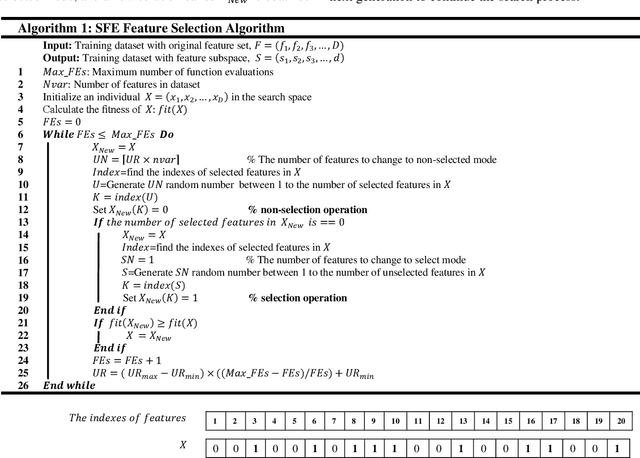
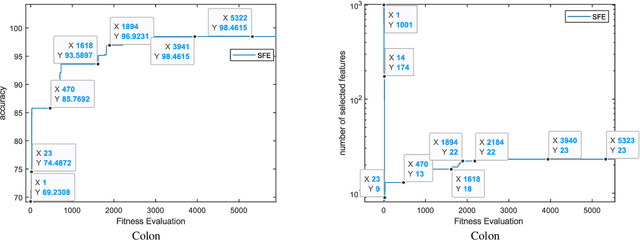
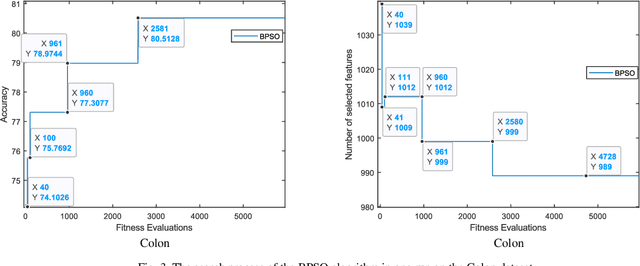
Abstract:In this paper, a new feature selection algorithm, called SFE (Simple, Fast, and Efficient), is proposed for high-dimensional datasets. The SFE algorithm performs its search process using a search agent and two operators: non-selection and selection. It comprises two phases: exploration and exploitation. In the exploration phase, the non-selection operator performs a global search in the entire problem search space for the irrelevant, redundant, trivial, and noisy features, and changes the status of the features from selected mode to non-selected mode. In the exploitation phase, the selection operator searches the problem search space for the features with a high impact on the classification results, and changes the status of the features from non-selected mode to selected mode. The proposed SFE is successful in feature selection from high-dimensional datasets. However, after reducing the dimensionality of a dataset, its performance cannot be increased significantly. In these situations, an evolutionary computational method could be used to find a more efficient subset of features in the new and reduced search space. To overcome this issue, this paper proposes a hybrid algorithm, SFE-PSO (particle swarm optimization) to find an optimal feature subset. The efficiency and effectiveness of the SFE and the SFE-PSO for feature selection are compared on 40 high-dimensional datasets. Their performances were compared with six recently proposed feature selection algorithms. The results obtained indicate that the two proposed algorithms significantly outperform the other algorithms, and can be used as efficient and effective algorithms in selecting features from high-dimensional datasets.
A cognitive based Intrusion detection system
May 19, 2020



Abstract:Intrusion detection is one of the primary mechanisms to provide computer networks with security. With an increase in attacks and growing dependence on various fields such as medicine, commercial, and engineering to give services over a network, securing networks have become a significant issue. The purpose of Intrusion Detection Systems (IDS) is to make models which can recognize regular communications from abnormal ones and take necessary actions. Among different methods in this field, Artificial Neural Networks (ANNs) have been widely used. However, ANN-based IDS, has two main disadvantages: 1- Low detection precision. 2- Weak detection stability. To overcome these issues, this paper proposes a new approach based on Deep Neural Network (DNN. The general mechanism of our model is as follows: first, some of the data in dataset is properly ranked, afterwards, dataset is normalized with Min-Max normalizer to fit in the limited domain. Then dimensionality reduction is applied to decrease the amount of both useless dimensions and computational cost. After the preprocessing part, Mean-Shift clustering algorithm is the used to create different subsets and reduce the complexity of dataset. Based on each subset, two models are trained by Support Vector Machine (SVM) and deep learning method. Between two models for each subset, the model with a higher accuracy is chosen. This idea is inspired from philosophy of divide and conquer. Hence, the DNN can learn each subset quickly and robustly. Finally, to reduce the error from the previous step, an ANN model is trained to gain and use the results in order to be able to predict the attacks. We can reach to 95.4 percent of accuracy. Possessing a simple structure and less number of tunable parameters, the proposed model still has a grand generalization with a high level of accuracy in compared to other methods such as SVM, Bayes network, and STL.
High Accuracy Classification of White Blood Cells using TSLDA Classifier and Covariance Features
Jul 16, 2019



Abstract:creating automated processes in different areas of medical science with the application of engineering tools is a highly growing field over recent decades. In this context, many medical image processing and analyzing researchers use worthwhile methods in artificial intelligence, which can reduce necessary human power while increases accuracy of results. Among various medical images, blood microscopic images play a vital role in heart failure diagnosis, e.g., blood cancers. The prominent component in blood cancer diagnosis is white blood cells (WBCs) which due to its general characteristics in microscopic images sometimes make difficulties in recognition and classification tasks such as non-uniform colors/illuminances, different shapes, sizes, and textures. Moreover, overlapped WBCs in bone marrow images and neighboring to red blood cells are identified as reasons for errors in the classification task. In this paper, we have endeavored to segment various parts in medical images via Na\"ive Bayes clustering method and in next stage via TSLDA classifier, which is supplied by features acquired from covariance descriptor results in the accuracy of 98.02%. It seems that this result is delightful in WBCs recognition.
Control of a 2-DoF robotic arm using a P300-based brain-computer interface
Jan 05, 2019



Abstract:In this study, a novel control algorithm for a P-300 based brain-computer interface is fully developed to control a 2-DoF robotic arm. Eight subjects including 5 men and 3 women, perform a 2-dimensional target tracking task in a simulated environment. Their EEG signals from visual cortex are recorded and P-300 components are extracted and evaluated to perform a real-time BCI based controller. The volunteer's intention is recognized and will be decoded as an appropriate command to control the cursor. The final goal of the system is to control a simulated robotic arm in a 2-dimensional space for writing some English letters. The results show that the system allows the robot end-effector to move between arbitrary positions in a point-to-point session with the desired accuracy. This model is tested on and compared with Dataset II of the BCI Competition. The best result is obtained with a multi-class SVM solution as the classifier, with a recognition rate of 97 percent, without pre-channel selection.
A Framework for learning multi-agent dynamic formation strategy in real-time applications
Aug 01, 2014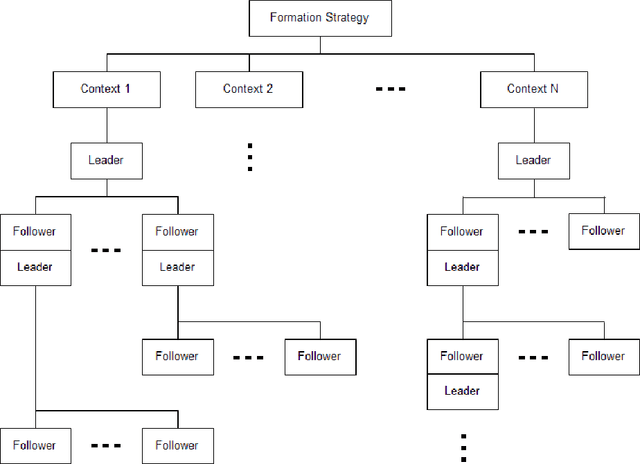
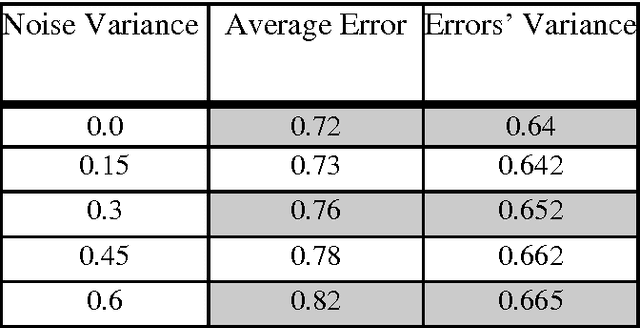
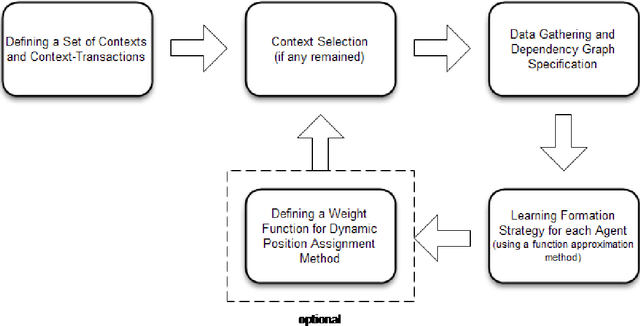
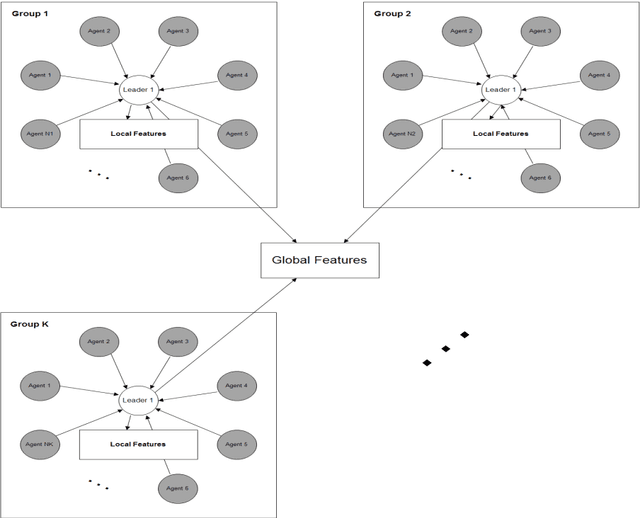
Abstract:Formation strategy is one of the most important parts of many multi-agent systems with many applications in real world problems. In this paper, a framework for learning this task in a limited domain (restricted environment) is proposed. In this framework, agents learn either directly by observing an expert behavior or indirectly by observing other agents or objects behavior. First, a group of algorithms for learning formation strategy based on limited features will be presented. Due to distributed and complex nature of many multi-agent systems, it is impossible to include all features directly in the learning process; thus, a modular scheme is proposed in order to reduce the number of features. In this method, some important features have indirect influence in learning instead of directly involving them as input features. This framework has the ability to dynamically assign a group of positions to a group of agents to improve system performance. In addition, it can change the formation strategy when the context changes. Finally, this framework is able to automatically produce many complex and flexible formation strategy algorithms without directly involving an expert to present and implement such complex algorithms.
Hybrid systems modeling for gas transmission network
Sep 28, 2012Abstract:Gas Transmission Networks are large-scale complex systems, and corresponding design and control problems are challenging. In this paper, we consider the problem of control and management of these systems in crisis situations. We present these networks by a hybrid systems framework that provides required analysis models. Further, we discuss decision-making using computational discrete and hybrid optimization methods. In particular, several reinforcement learning methods are employed to explore decision space and achieve the best policy in a specific crisis situation. Simulations are presented to illustrate the efficiency of the method.
* This paper has been withdrawn by the author due to a crucial citation error in introduction section
 Add to Chrome
Add to Chrome Add to Firefox
Add to Firefox Add to Edge
Add to Edge